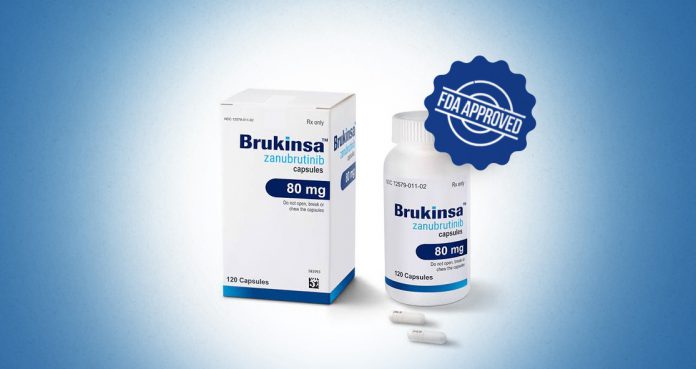Last week, the U.S. Food and Drug Administration (FDA) announced accelerated approval of Brukinsa (zanubrutinib) for the treatment of mantle cell lymphoma in adults.
The FDA approved the drug based on a single-arm clinical trial that involved 86 patients suffering from mantle cell lymphoma and had received at least one previous treatment.
It was found that the drug helped shrink the tumor in 84 percent of patients. In another clinical trial that included 32 patients, the drug was found effective at shrinking the tumor in more than 84 percent of patients.
The recommended oral dose of Brukinsa is 160 mg twice daily or 320 mg once daily.
The drug prescribing information mentions warnings and precautions for infections, hemorrhage, cytopenias, cardiac arrhythmias, second primary malignancies, and embryo-fetal toxicity.
The FDA said the most commonly reported adverse effects of the drug included “decreased neutrophil count, decreased platelet count, upper respiratory tract infection, decreased white blood cell count, decreased hemoglobin, rash, bruising, diarrhea, and cough.”
The agency said that doctors should monitor patients who are taking Brukinsa for any signs of infection, hemorrhage, cytopenias, and cardiac arrhythmias.
The FDA said patients who take Brukinsa should wear protective clothing while going outdoors because the drug can increase the risk of other cancers, including melanoma, skin cancer. Mantle cell lymphoma is a type of non-Hodgkin lymphoma that is developed when the body makes abnormal lymphoma cells, aka B-cells, which are white blood cells that fight infection.





















